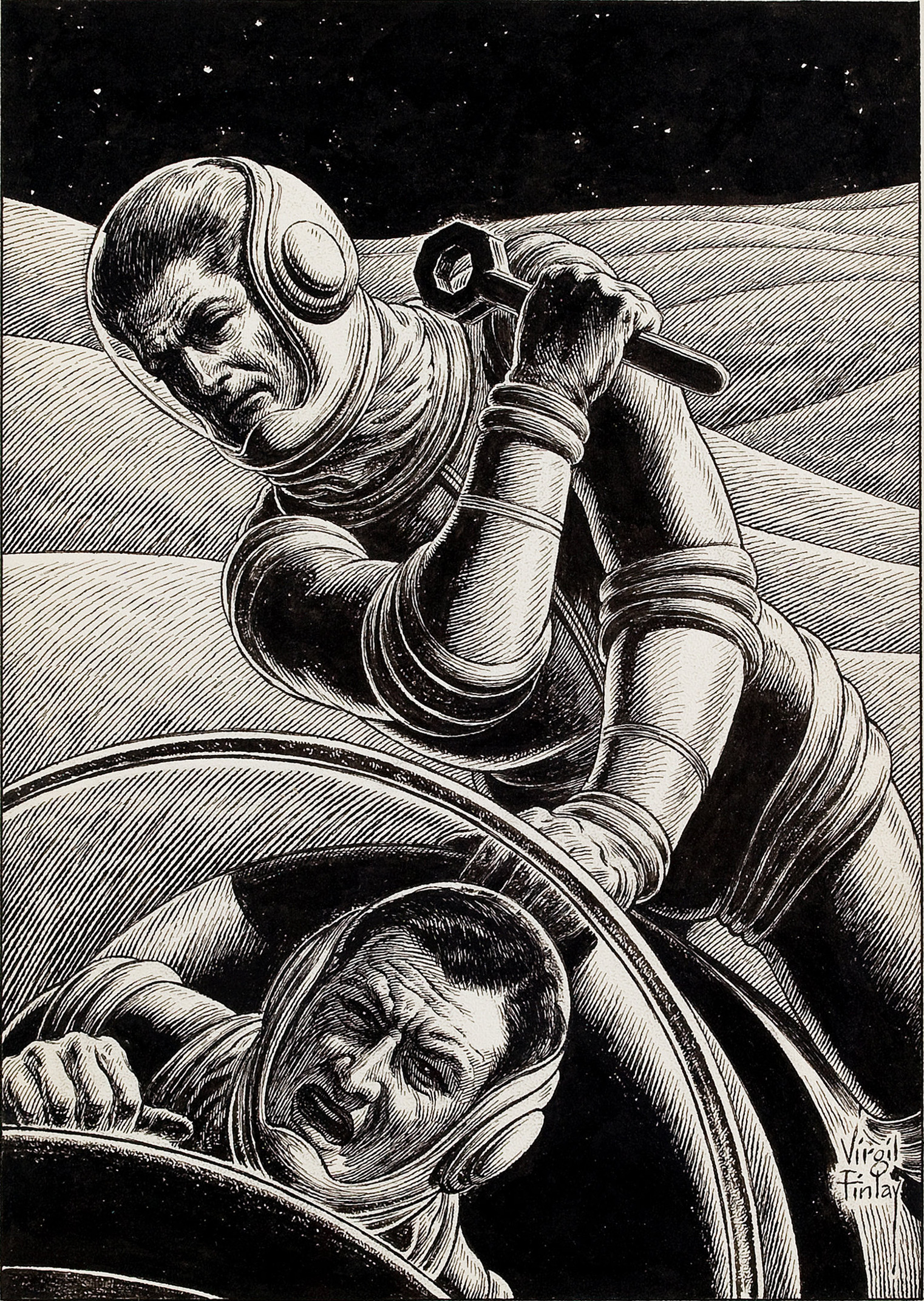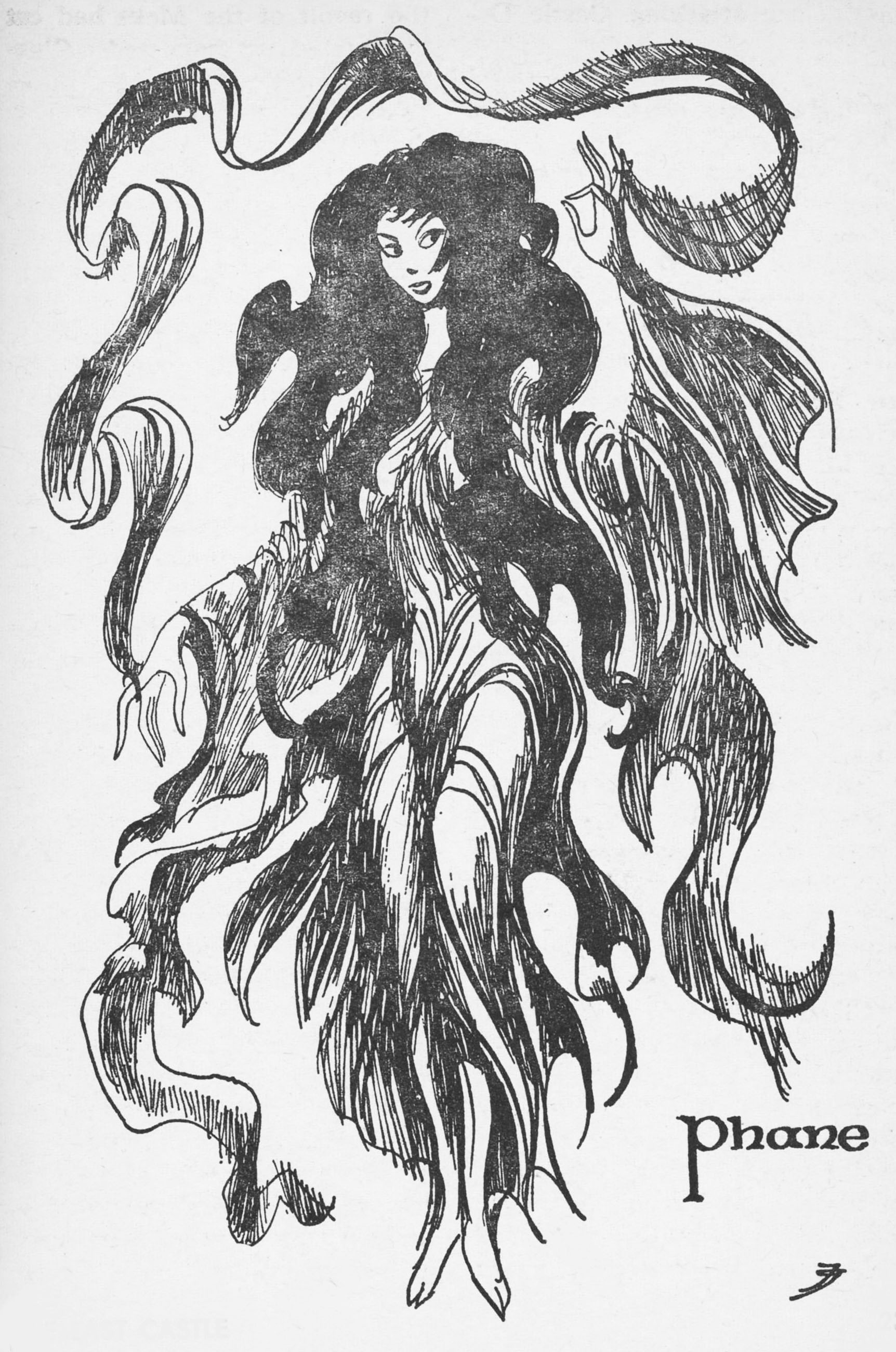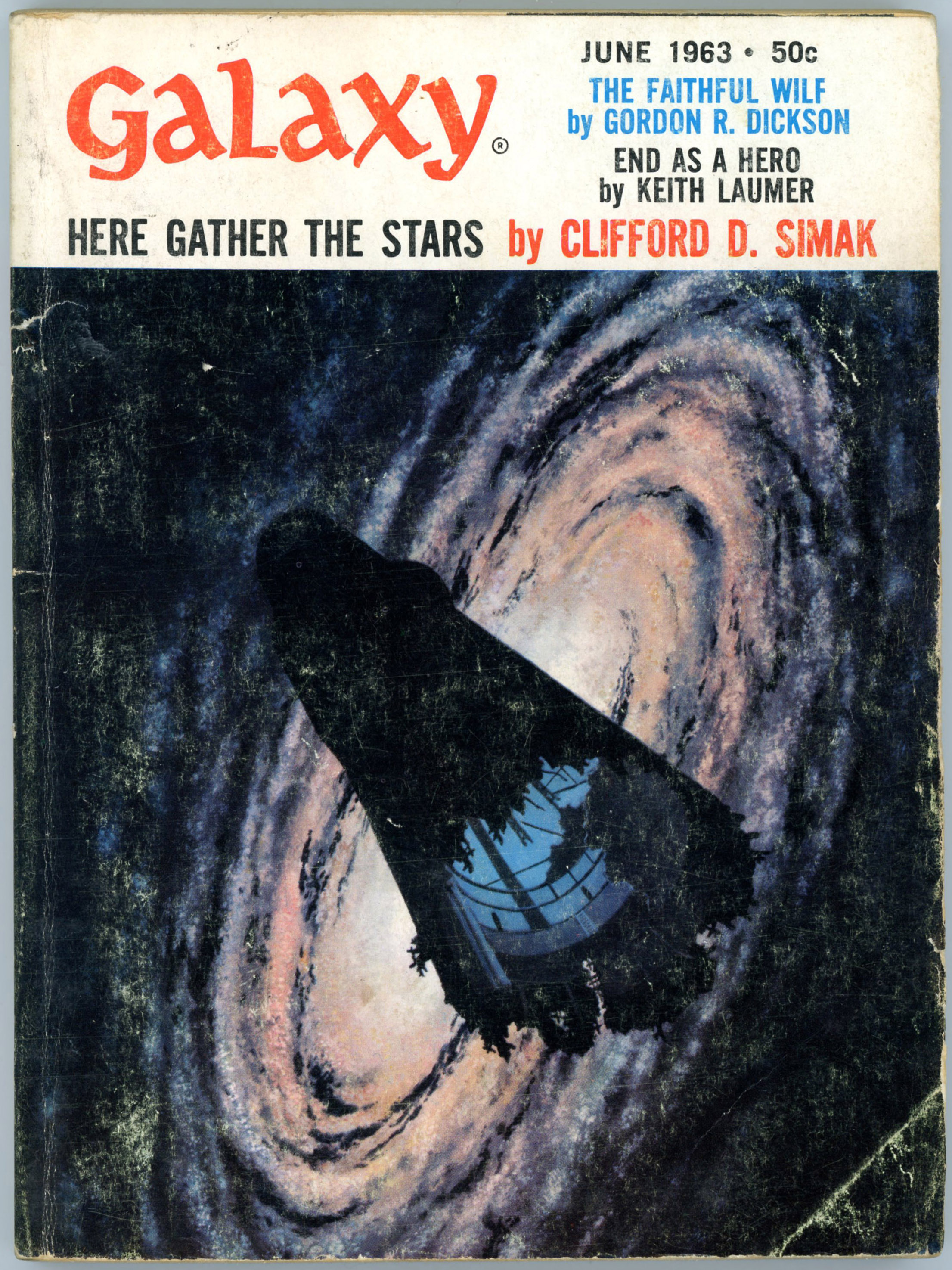[This post, created on May 8, 2017, is pretty simple: It shows the cover (by Dember) of the October, 1966 issue of Galaxy Science Fiction, and interior illustrations by Virgil Finlay for Larry Niven’s “How The Heroes Die”, and one illustration by Jack Gaughan for Arthur C. Clarke’s “A Recursion in Metastories”. I’ve updated the post to include an image of Finlay’s original art for the second of his two pieces for Niven’s story. Just a black and white image, but it shows his work with much better crispness than even the best scan from the actual magazine. Even when limited to a vertical / rectangular format, his art was stunning.]
____________________
Finlay’s illustration for Larry Niven’s story “How The Heroes Die” (p. 59).
 Finlay’s illustration for Larry Niven’s story “How The Heroes Die” (p. 71).
Finlay’s illustration for Larry Niven’s story “How The Heroes Die” (p. 71).
 …Virgil Finlay’s original art, from Heritage Auctions. The original is described as “pen and ink on paper, 9.5 x 6.5 inches, signed lower right, from the Jerry Weist Collection“.
…Virgil Finlay’s original art, from Heritage Auctions. The original is described as “pen and ink on paper, 9.5 x 6.5 inches, signed lower right, from the Jerry Weist Collection“.
Jack Gaughan’s illustration for “A Recursion in Metastories”, by Arthur C. Clarke (p. 87).
 Reference (…well, just one reference…)
Reference (…well, just one reference…)
“Two Spacemen Fighting, science fiction pulp interior story illustration”, at Heritage Auctions
May 8, 2017


















